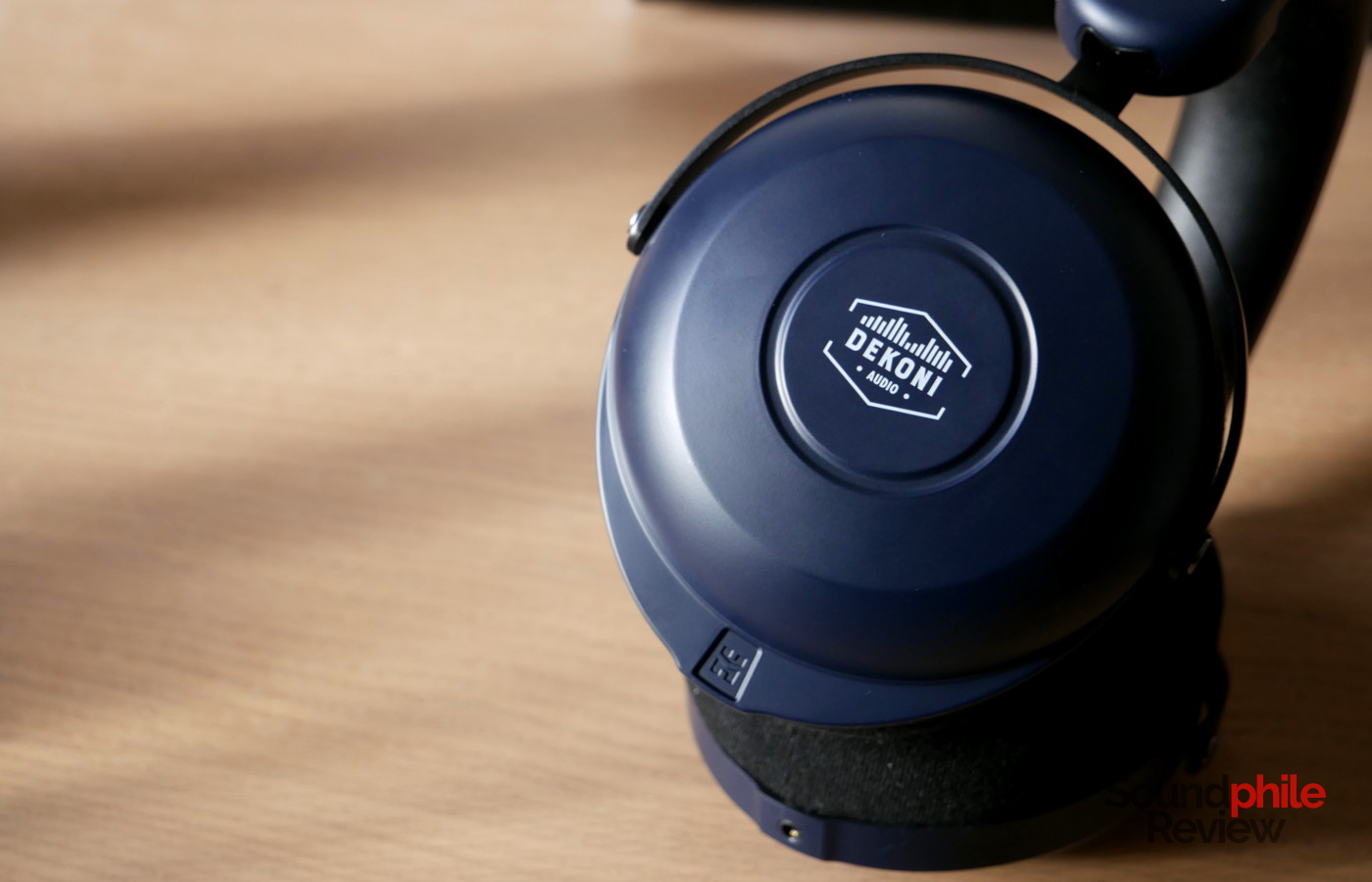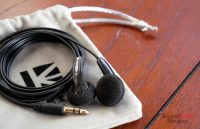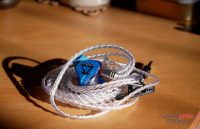If you happen to be from my generation or from the previous one, you probably know Eiffel 65’s I’m blue – a classic from the late ’90s eurodisco. I just couldn’t refrain from titling this review after that song, considering Dekoni’s fixation with blue colours. Their first headphones, the Blue, were made in collaboration with Fostex; the new Dekoni Cobalt are made in collaboration with HiFiMAN. But despite the latter’s fame as a manufacturer of planar headphones, the Cobalt use a dynamic driver. Dekoni developed two earpads specifically for the Cobalt. Let’s see how they fare!
Disclaimer: I received this unit free of charge from Dekoni’s PR agency in the UK. The Cobalt retail for $399/£449. Additional information on the company’s website.
TL;DR: recap
| Pros |
Cons |
| + Lightweight and comfortable
+ Very fast, physical sound + Two sets of earcups in the box + Expansive soundstage |
– Very uneven response
– Very, very large treble peak |
Rating: 6.5/10
Packaging & Accessories
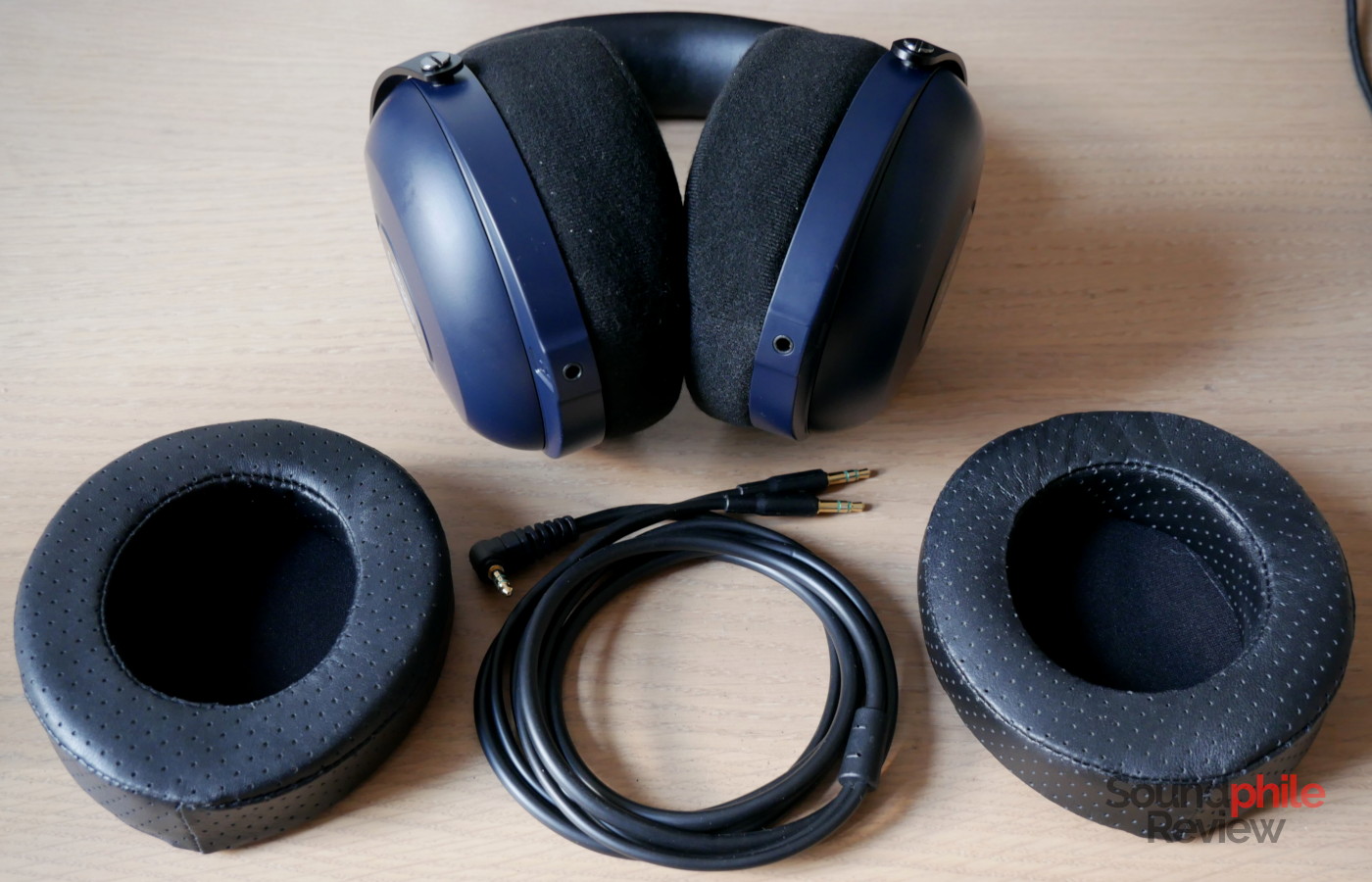
The packaging is definitely HiFiMAN through and through. Inside the box are the headphones themselves, the cable (with 3.5 mm jacks on both ends, as well as an adapter to 6.3 mm) and two different sets of earpads.
Design & Comfort
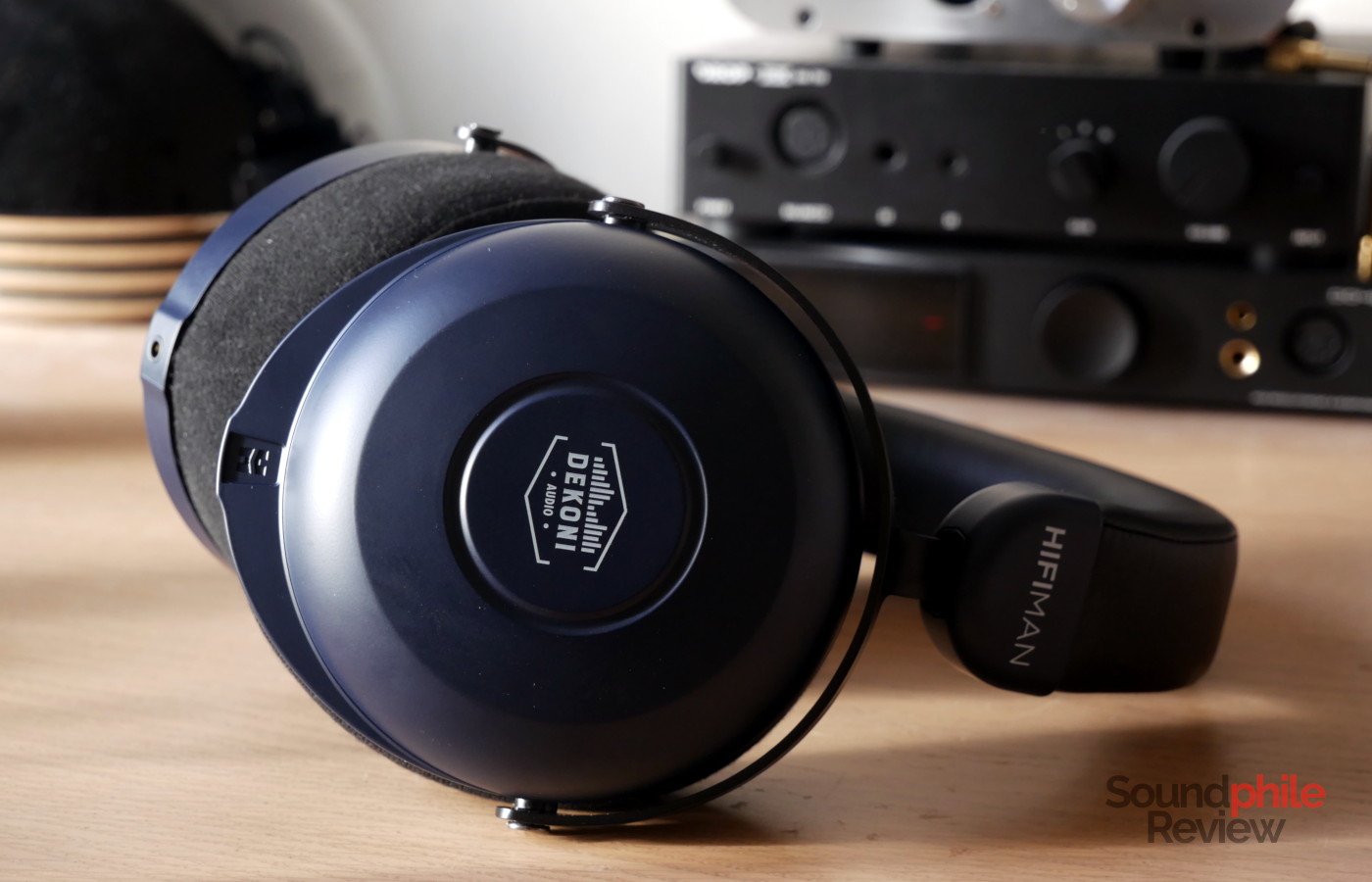
The design of the Dekoni Cobalt is really similar to that of other closed-back headphones recently launched by HiFiMAN, such as the HE-R7DX they made in collaboration with Drop. The earcups appear, in fact, to be identical, and the difference between them lies in the headband, which in the case of the Cobalt is identical to the latest style by HiFiMAN and therefore to that of headphones such as the R9 or the Deva Pro. It’s a distinctly modern design, with curved lines and the Dekoni logo in white contrasting clearly with the dark blue of the earcups. The HiFiMAN logo is placed above the jack connectors, which are on both sides.
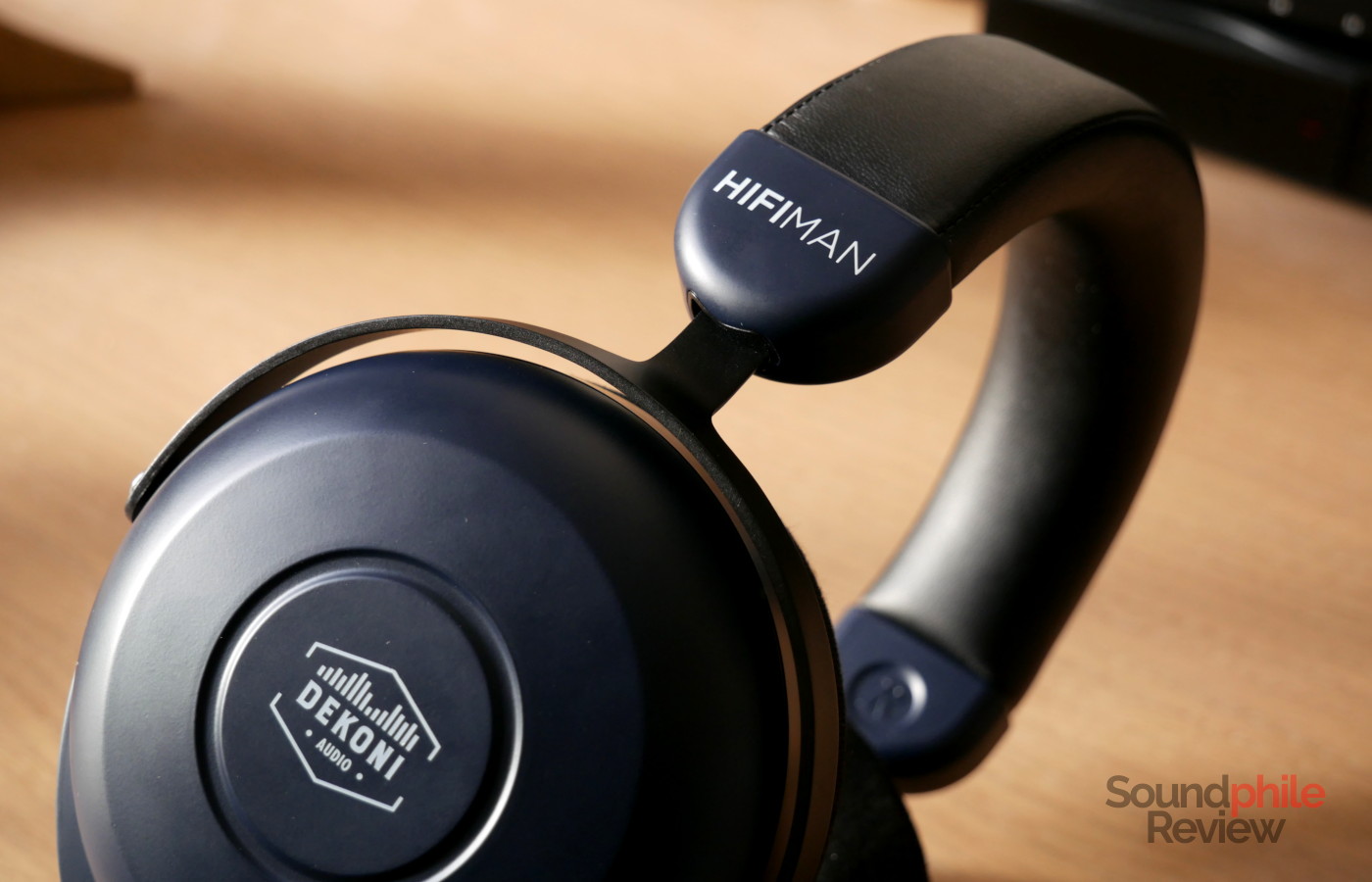
Build quality is the same as the other recent HiFiMAN products, which is to say that it’s good but not exceptional. The headphones are made entirely out of plastic, with the gimbals being the only parts in metal. The upside of this is that the Cobalt are very lightweight: they’re just 311 g (without the cable), which is a lot less than their large size would suggest.
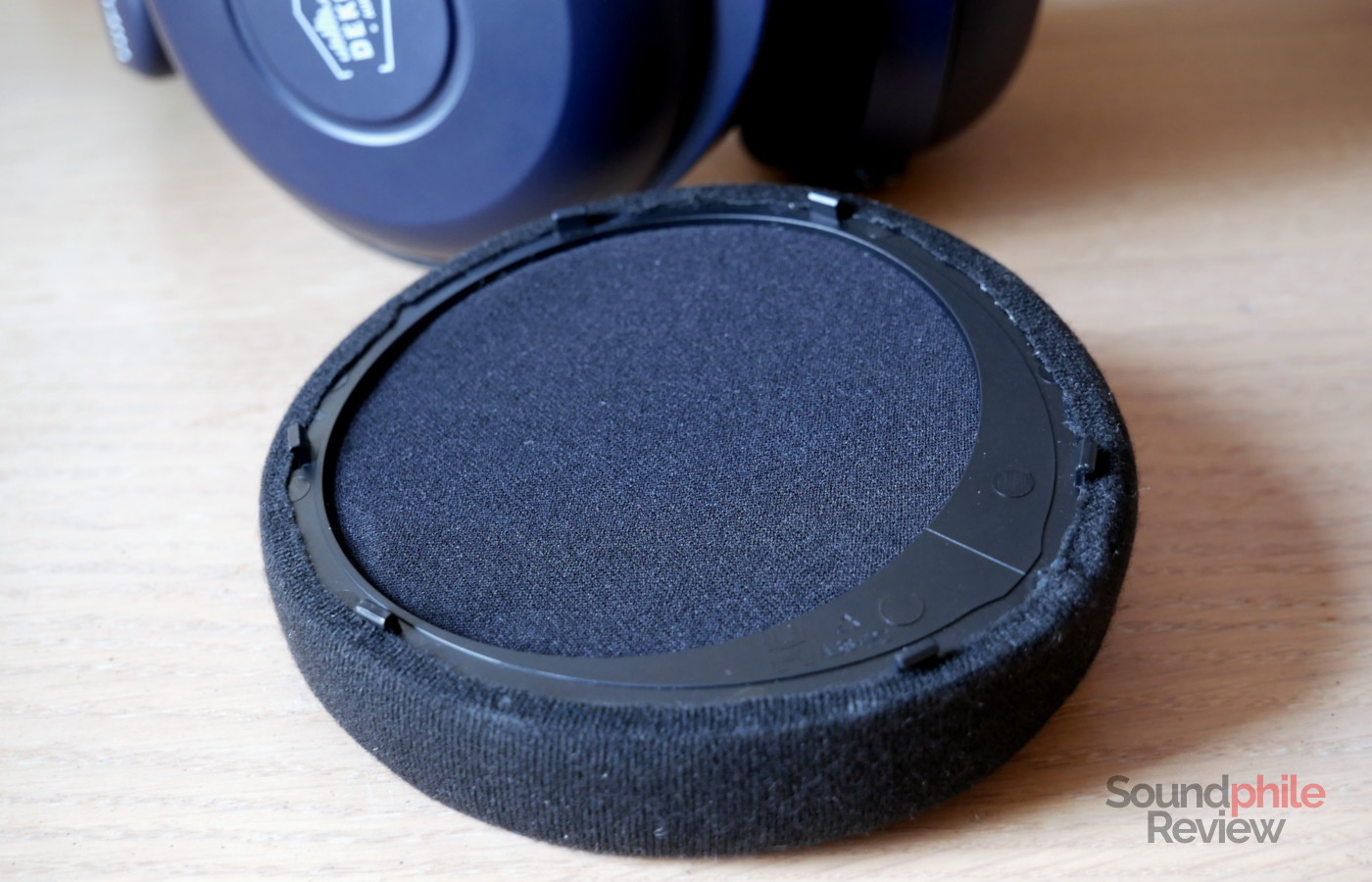
The earpads are mounted on plastic frames which are then secured to the cups with small hooks, which make removing them relatively easy. I say “relatively” because you need to be very intentional with it, as they require a bit of force to be snapped out of place so you can replace them. Once you learn the trick (to press on the sides so that the plastic frame bends a bit and you can press directly on it), it’s a breeze.
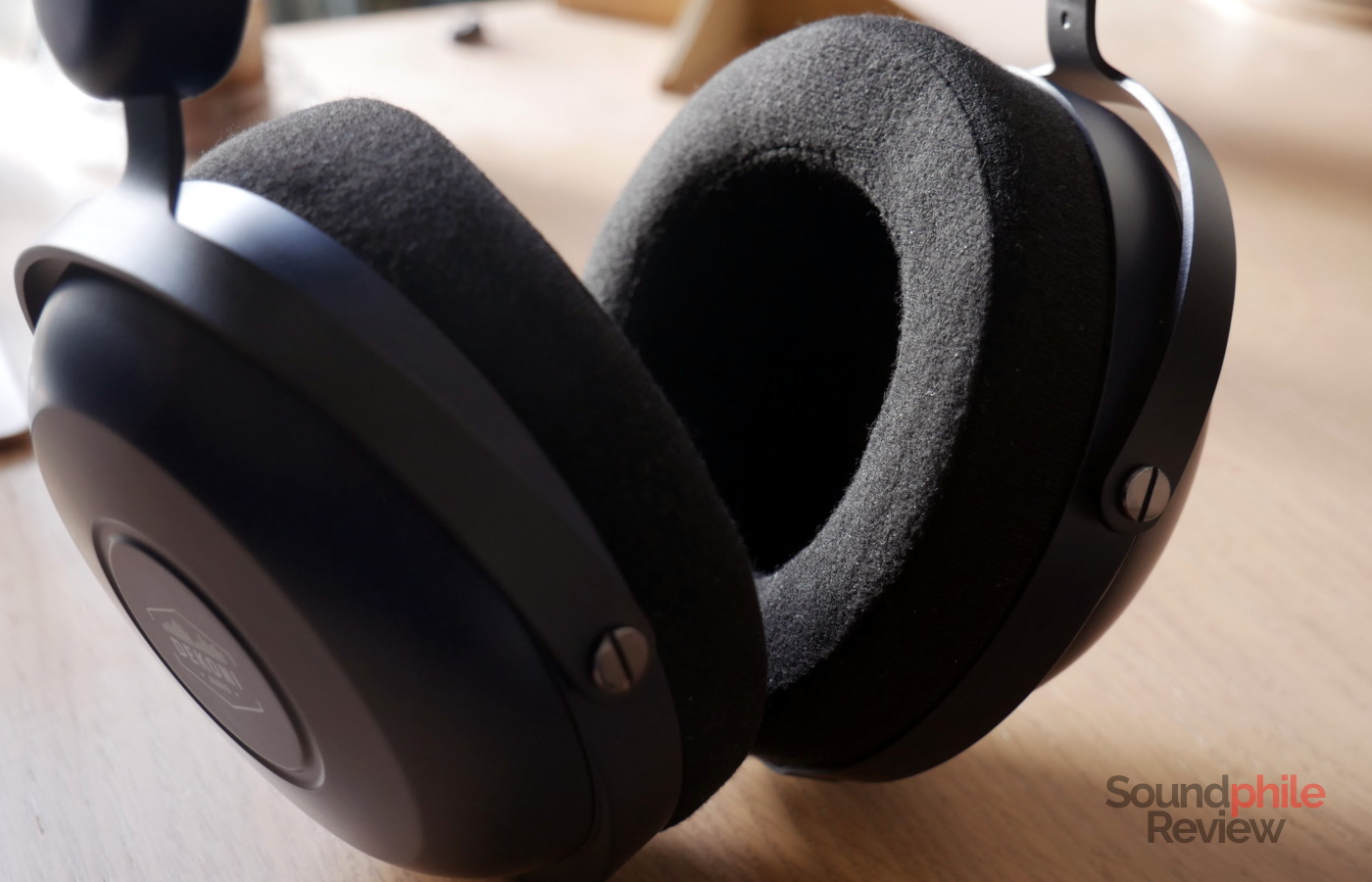
Comfort is quite good, mostly due to the light weight; I can wear them for about one hour before my sensitive scalp starts protesting and that can be considered a good result. The fenestrated sheepskin earpads are quite hot overall.
Passive isolation is very low, so much so that I don’t really hear a difference between wearing the headphones and not. If you are looking for headphones which allow you to block noise from the outside, these won’t cut it.
The cable is, again, the same we’ve already seen on all recent HiFiMAN releases: it’s 1.2 m long, it’s very flexible and malleable (and it doesn’t coil too much), but it also is quite plasticky. It comes with a right-angled 3.5 mm jack.
Sound & Specs
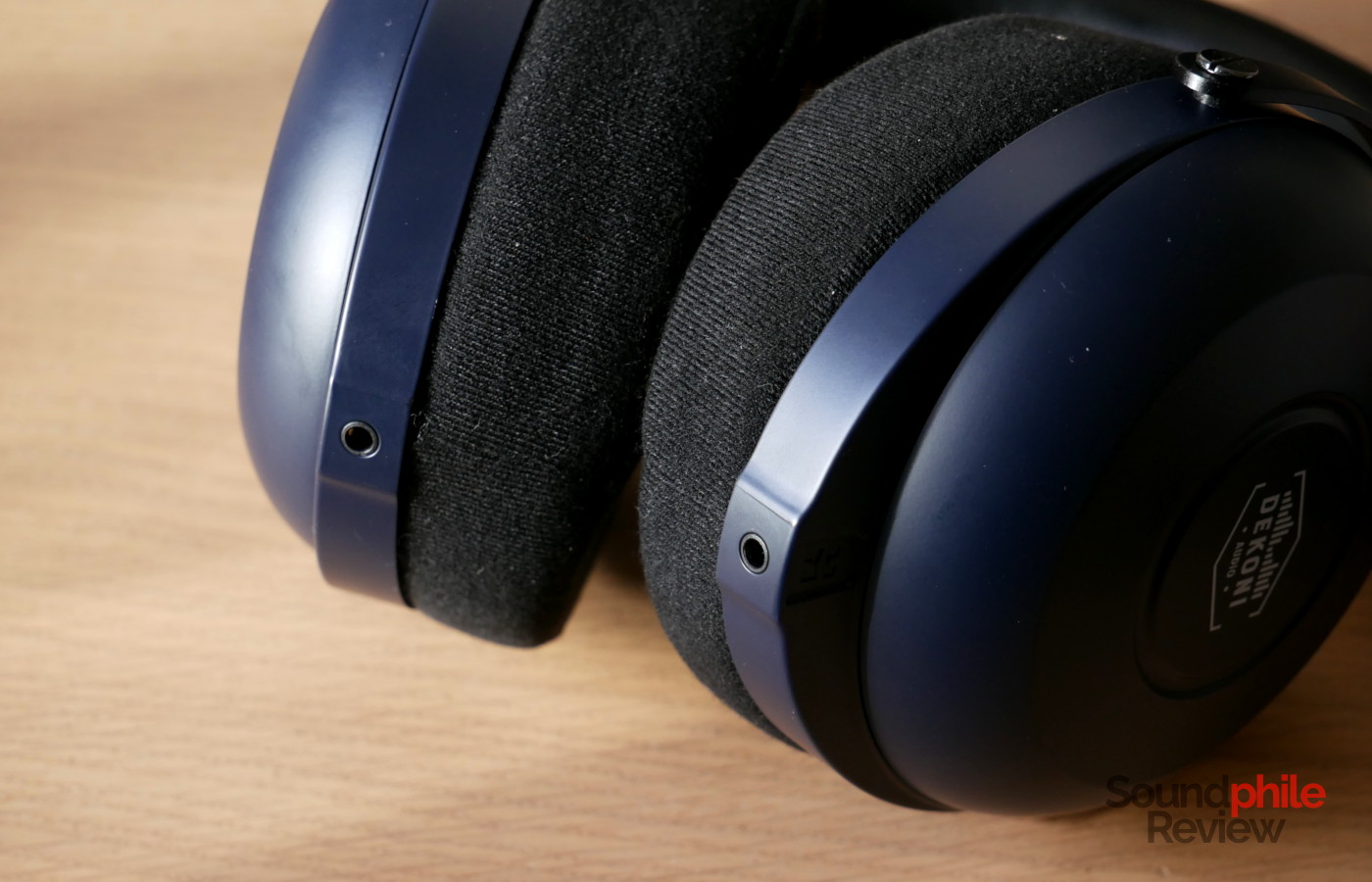
I tested the Dekoni Cobalt with several devices, including an SMSL C200 and an Astell&Kern SP3000.
Dekoni Cobalt |
| Frequency response | 20 – 20,000 Hz |
| Impedance | 16 Ω |
| Sensitivity | 101 dB |
The Dekoni Cobalt are incredibly easy to drive at just 16 Ω impedance and a sensitivity of 101 dB; you can easily drive them with your phone or any other non-dedicated source. Now, when you look at Dekoni’s own frequency response graph, the Cobalt appear… not great, to put it mildly. The response is not exactly linear nor well-balanced – quite the opposite, in fact. And yet, how do these sound? The answer is that they’re surely interesting and without a doubt different. They work better with some genres and worse with others, especially with the velour pads, but overall the listening experience is better than the graph would lead one to believe.
The following comments are about the headphones using the sheepskin pads, so bear that in mind. The velour pads are covered below.
The soundstage is much larger than what I normally expect from closed-back headphones; in a way, they sound almost like open-backs, which is really surprising. They place instruments very close to the listener, though, with a sensation of them playing in a large space (with good width, but relatively little depth). Imaging does a good job at giving each instruments its own specific place, but it does have to contend with the fact that instruments are all placed near the listener: this means that there is sometimes a bit of overlap. On the other hand, the impression is always that instruments come from the sides, and rarely squarely from the centre, which creates a weird sensation. Instrument separation is quite good, though more complex tracks will put the Cobalt to the test.
Bass is quite preponderant and one of the main ingredients of the mix. It is mostly made of mid-bass, which dominates everything else on both its sides: there is a relatively fast slope to the left, with sub-bass rapidly declining in volume, whereas there is a very slow descent into the lower mids (which is actually an ascent in terms of frequency, but you get my point). This makes bass almost overwhelming at times and it definitely gives a lot of warmth to the sound in general. Speed is remarkable, and so is physicality: drum kicks, as an example, sound very powerful and give you that physical hit that many look for.
Midrange is surely quite weird in tonality as it is confined between the bulky bass and the large presence of treble. As a consequence, it is V-shaped itself, but it’s especially the upper region which comes out on top and makes it bright as a whole, though with a weird twist. Take Gaia Cuatro’s Como lo veo: the violin comes out as very present and almost strident, but at the same time as lacking, while the piano lacks presence and liveliness. This is because the lower-middle region is actually recessed compared to the rest, which makes instruments (and, to some extent, voices) sound more distant and a bit duller. Overall, the result depends heavily on what you are listening to. Just like with bass, there is very good physicality and speed is more than decent; details are also really good.
Treble is the other main piece that makes up the sound of the Cobalt. There’s a rapid increase as frequency goes up from the base level of the upper midrange, which culminates in the massive spike you see in the graph provided by the company. That’s actually there and it is clearly audible, although I have to say it is generally less fatiguing than I expected it to be. I say “generally” because it can become quite penetrating at times, if the source material already has a lot of things happening in that area: take Gaia Cuatro’s Gaia as an example, as it already has quite prominent cymbals which are brought even more to the fore, making them aggressive at times. There’s then a very rapid, almost sudden fall which leaves the upper area in the background, barely audible. The level of detail is good, and it allows you to hear many small details, but it does not portray those micro-details that would allow you to perceive the finer nuances.
When it comes to what the Cobalt are good at, I found that they work really really well with games as the added emphasis on bass and the upper mids suits this type of content.
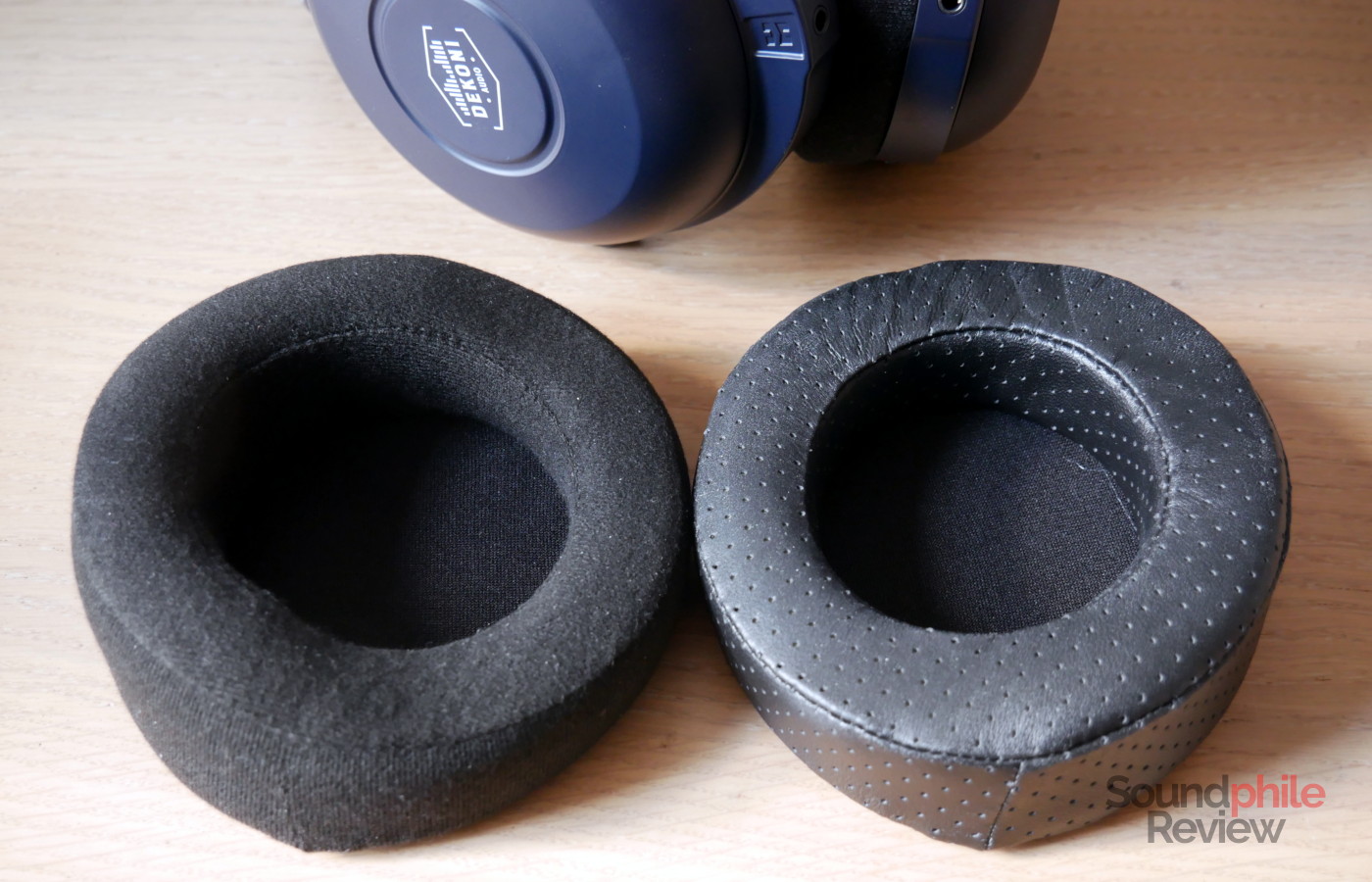
The velour pads offer a different tuning altogether: one where midrange is relatively more balanced, but it also sounds more recessed. Treble is a bit less emphasised, too, though still very much present in the mix; the peak we found with the sheepskin pads is reduced a lot, but it’s still there. Bass is less present overall and with less depth, too. What changes a lot is the soundstage, which is more intimate and less expansive.
Final Thoughts
The Dekoni Cobalt are good headphones, but they face fierce competition in the price bracket they are in (e.g. by HiFiMAN’s own Edition XS). In fact, I think the Cobalt would fare better against said competition if they were priced a bit lower. While it’s ultimately down to your personal preference, the Cobalt are objectively (as in, “measurably”) very far from the linearity that would allow them to reproduce any kind of music without preferences for genre – as they are quite specific in what they reproduce well and what they don’t. This puts them off the radar of those who look for the fabled “high fidelity”. Still, they are a very fun option if you don’t want to pursue perfect fidelity but, instead, you simply want to take enjoyment from what you hear. The Dekoni Cobalt surely won’t let you down with that and nobody will ever be able to say that they’re boring or lifeless. Quite the contrary, in fact!

